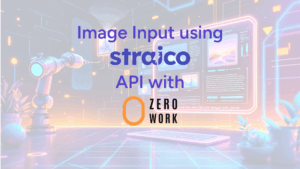In this digital era, Generative AI has given rise to a myriad of innovative tools that are reshaping content creation. From enhancing image quality to extracting valuable insights, these AI-powered image processing tools have become indispensable across various industries. Let’s dive into the top 10 AI image processing tools that are at the forefront of this revolution.
Table of Contents
Toggle1. Straico
Straico takes the lead as a comprehensive AI image processing tool integrating content and image generation capabilities. Engineered to be an all-rounder, Straico simplifies content creation with its personalized chat assistant, prompts library, and AI-driven image creation interface.
If you’re looking to supercharge your content creation capabilities, don’t forget to check out Straico which is a multi-model AI offering multiple templates for Content Creation, Copywriting & Image Creation.
2. TensorFlow
TensorFlow, an open-source machine learning framework developed by the Google Brain team, has emerged as a powerhouse in the world of AI image processing. With a comprehensive ecosystem of tools and libraries, TensorFlow allows developers to build and deploy sophisticated image processing models. Its image recognition capabilities, powered by convolutional neural networks (CNNs), enable tasks such as object detection, image classification, and segmentation. TensorFlow’s versatility and community support make it a go-to choice for both beginners and seasoned AI practitioners.
3. Amazon Rekognition
Amazon Rekognition is a cloud-based AI image processing service offered by Amazon Web Services (AWS). This tool simplifies the integration of image and video analysis into applications without requiring extensive machine learning expertise. With capabilities like facial recognition, emotion analysis, and object detection, Amazon Rekognition is a leading tool. It finds applications in areas such as security, content moderation, and user authentication. Its seamless integration with other AWS services enhances scalability and accessibility for developers.
4. Microsoft Azure Computer Vision
Microsoft Azure Computer Vision is part of the Azure Cognitive Services suite, providing a cloud-based solution for image processing. Leveraging advanced machine learning models, this tool enables image analysis with features like image classification, OCR (optical character recognition), and content moderation. Microsoft Azure Computer Vision caters to diverse industries, including healthcare, retail, and manufacturing, offering a scalable and reliable platform for extracting valuable information from visual data.
5. Google Cloud Vision AI
Google Cloud Vision AI, another cloud-based solution, is Google’s offering for image processing powered by machine learning. This tool excels in tasks like label detection, facial recognition, and landmark identification. Leveraging Google’s expertise in deep learning, Cloud Vision AI delivers accurate and fast results. Its API integration facilitates the development of applications that require image analysis, making it a preferred choice for businesses utilizing Google Cloud Platform services.
6. IBM Watson Visual Recognition
IBM Watson Visual Recognition is part of the IBM Cloud services, providing a powerful platform for image analysis and classification. This tool utilizes deep learning algorithms to understand and categorize visual content. With features such as image tagging, face detection, and custom model training, IBM Watson Visual Recognition is suitable for a wide range of applications, from automating content organization to developing advanced surveillance systems. Its user-friendly interface and robust API support make it accessible for developers with varying levels of expertise.
7. NVIDIA Clara
NVIDIA Clara, developed by the leading graphics processing unit (GPU) manufacturer NVIDIA, is tailored for medical image processing. This AI-powered platform integrates deep learning techniques to assist healthcare professionals in tasks such as image segmentation, detection, and classification. By harnessing the parallel processing capabilities of NVIDIA GPUs, Clara accelerates the analysis of complex medical images, contributing to advancements in diagnostic accuracy and treatment planning.
8. Adobe Sensei
Adobe Sensei, the AI and machine learning framework embedded in Adobe’s Creative Cloud, is transforming the landscape of digital creativity. While Adobe Sensei extends beyond image processing, it is revolutionizing the way we edit and manipulate visual content. With capabilities like image recognition, auto-tagging, and content-aware fill, Adobe Sensei empowers creative professionals to streamline their workflows and achieve remarkable results in image editing and design.
9. Clarifai
Clarifai is an AI company that specializes in visual recognition solutions. Its image and video analysis tools are built on deep learning models, making them adept at tasks like object detection, image classification, and content moderation. Clarifai’s user-friendly interface and customizable models cater to a wide range of applications, from social media moderation to retail analytics. Its real-time processing capabilities make it a valuable asset for businesses requiring instant insights from visual data.
10. DeepArt.io
DeepArt.io takes a unique approach to image processing by merging AI with artistic expression. This online tool uses deep neural networks to apply artistic styles to photographs, transforming them into visually stunning artworks. Users can choose from a variety of artistic styles, from famous paintings to abstract designs, and apply them to their images. While not as versatile as other tools on this list, DeepArt.io exemplifies the creative potential of AI in transforming visual content into unique and aesthetically pleasing compositions.
Final Verdict On AI Image Processing Tools
The convergence of AI and image processing has given rise to a diverse array of tools that cater to the evolving needs of industries and creative professionals. From cloud-based solutions like Straico, Amazon Rekognition and Google Cloud Vision AI to specialized platforms like NVIDIA Clara for medical imaging, these tools are shaping the future of visual data analysis. As technology continues to advance, we can expect even more sophisticated AI image processing tools to emerge, unlocking new possibilities and reshaping how we perceive and interact with visual information. Whether you’re a developer, a healthcare professional, or a creative artist, these tools offer a glimpse into the transformative potential of AI in the realm of image processing




